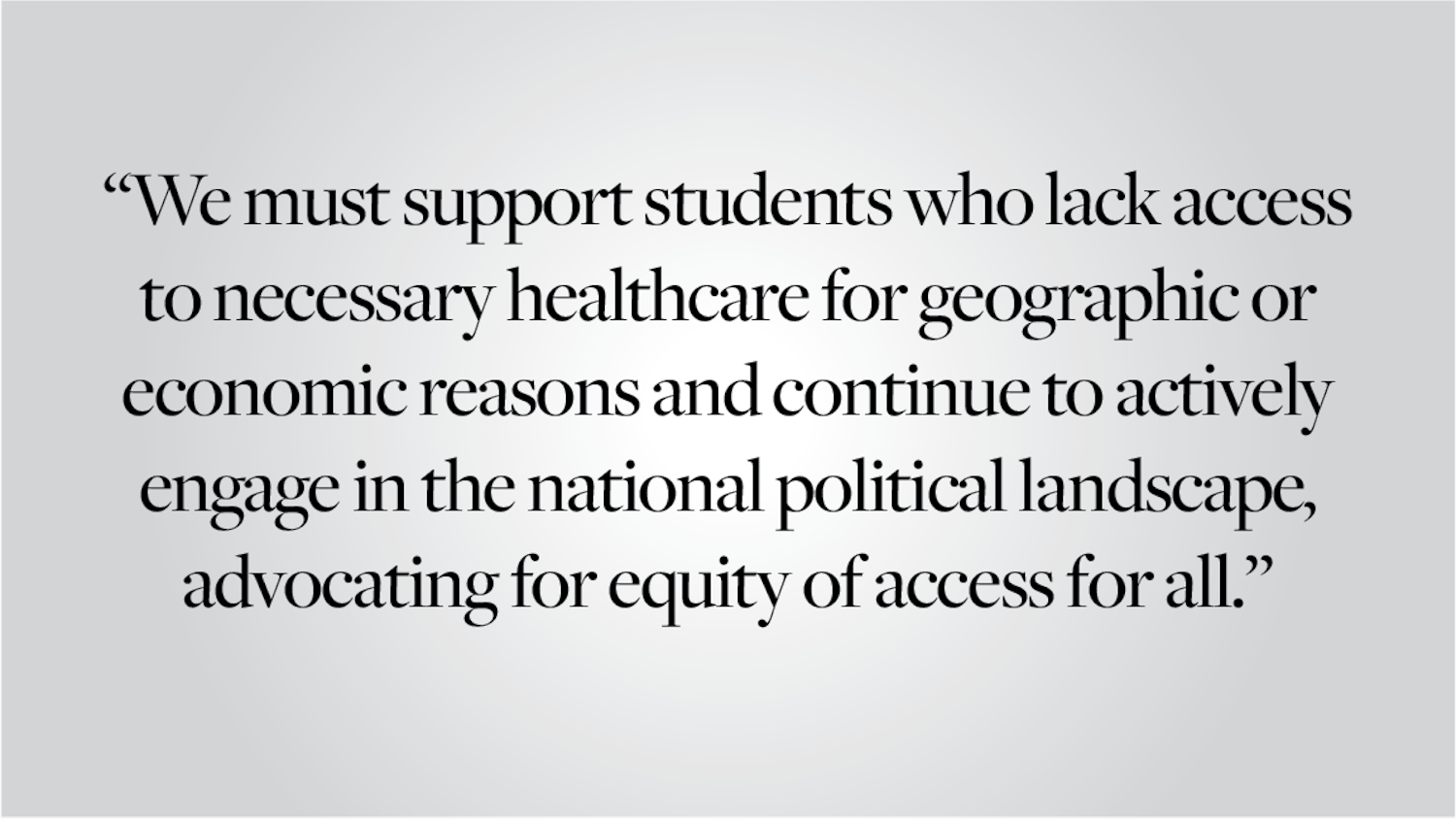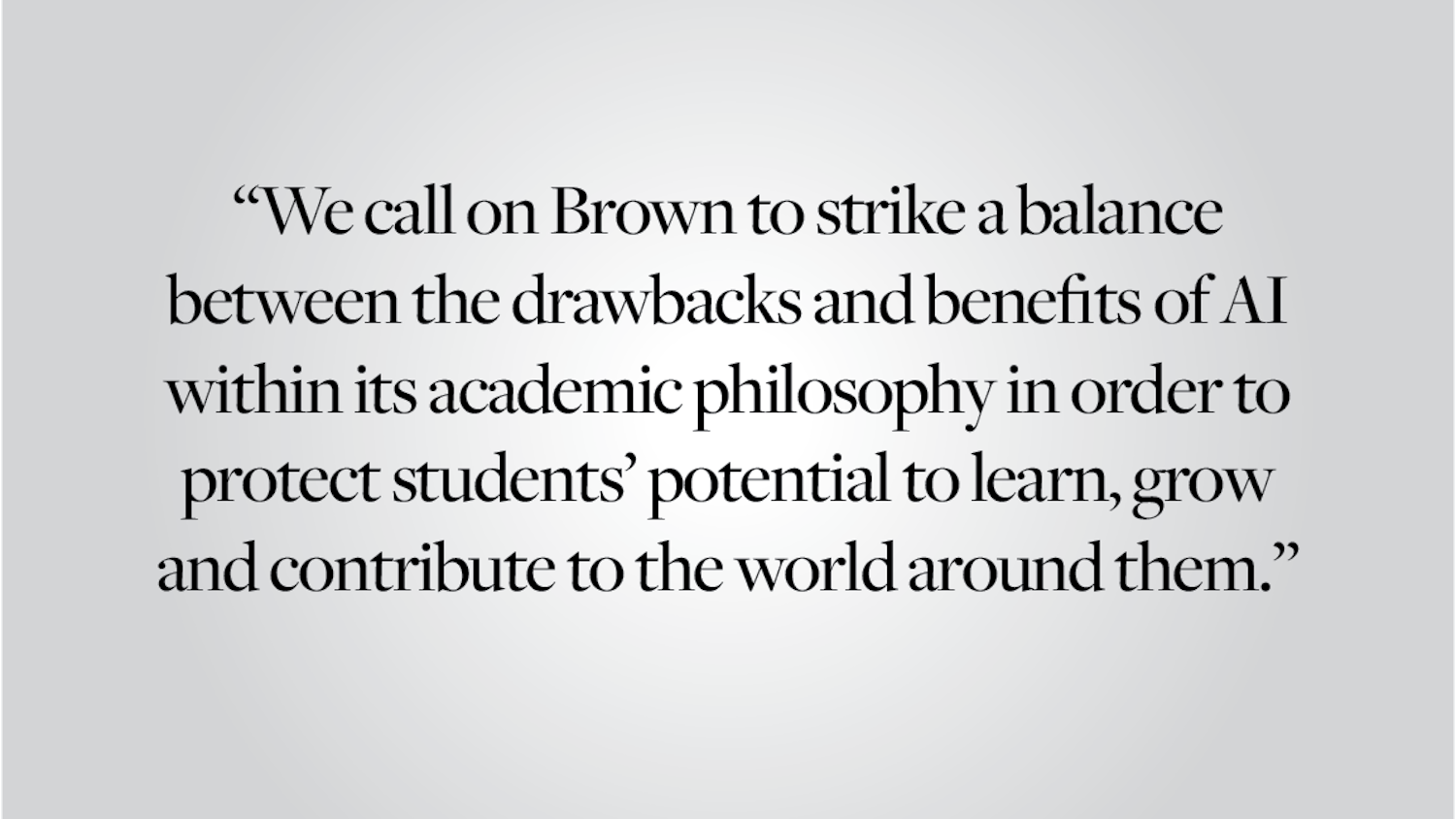Yesterday, President Christina Paxson emailed the community with the proposed strategic plan that, if approved, will guide Brown’s trajectory for the next decade. We urge all who are interested in the University’s future to read the plan in its entirety and to attend upcoming community forums in which students can share their thoughts. We, too, will offer significant coverage in the coming weeks and months, detailing and deconstructing the plan. Paxson’s plan presents much to discuss and digest, but we hope the discussion that surrounds it reinforces and builds upon one of Brown’s key principles: commitment to undergraduates and an appreciation for the university-college.
This plan will inevitably be compared to its predecessor, the ambitious Plan for Academic Excellence, which, accompanied by the Campaign for Academic Enrichment, brought in significant capital that provided the resources to grow the endowment, fund significant faculty growth, and transition to need-blind admissions for domestic first-year students. These goals were specifically outlined in the original plan. Its ambitious fundraising campaign produced record donations that funded a new medical school, a new campus center and a new athletic center. Applications to the University skyrocketed, and the PAE was widely seen as having raised the University’s overall stature.
In contrast, the new plan, titled “Building on Distinction,” appears to be more cautious and certainly more vague. The PAE included firmer language, promising that students “will benefit from a faculty which is significantly larger in size” and that “will be, across the board, better supported in terms of salaries and start-up packages that are truly competitive with our peers.” In contrast, the new plan offers precious few firm commitments.
Memorably, the previous plan included a commitment that “students who attend Brown 15 years from now will be better supported financially as well. Brown will offer need-blind admission for all undergraduates,” — a promise that, with the exception of transfer, international and Resumed Undergraduate Education students, came to fruition. While the student group Brown for Financial Aid gained significant traction on campus last year, pushing for full need-blind admission, many students will be disheartened to see that there are no concrete plans to accomplish this goal in the immediate future.
It is likely this plan will feed the perception of Paxson as a careful steward of the University’s wealth and stature. We are in a very different economic climate than we were 10 years ago, and federal funding and prodigious fundraising are less certain. As many Brown students and their families struggle with the aftermath of the economic downturn, it seems appropriate to forgo flashy expenditures in favor of a focus on sustained economic stability.
Indeed, the renewed commitment to master’s programs, along with a moderate increase in the student body, and the plan’s suggested emphasis on online learning seem targeted toward increasing University revenue. While more ambitious projects are also included — such as a commitment to expansion into the Jewelry District — the potential for private partnerships could render these projects less of a financial burden on the University itself.
It is important to remember that though the Plan for Academic Enrichment was itself controversial for its emphasis on growing Brown and expanding its graduate programs, it declared that “Brown’s self-definition as a university-college must be a continuing feature of all plans to improve Brown.” Brown’s commitment to undergraduate teaching through its status as a university-college has always been one of its defining features as well as one of its major selling points. This phrase is not mentioned at all throughout the new plan, and its absence is conspicuous. Though the plan suggests many initiatives aimed at undergraduates — specifically, the creation of sophomore seminars, renovations to the Sharpe Refectory, and an expansion of undergraduate research — most of the plan appears to be focused on improving graduate programs and improving conditions for faculty. The complete absence of the term “university-college” in the new plan begs the question of whether our administration is transitioning away from this status into a more typical university mold.
While increased expenditures on the graduate program and faculty research of course affect undergraduates, we are concerned with the notion that expanded online courses could eventually become a substitute for in-person faculty-student interaction, or at least prove to be a major distraction. Though Brown is a famously progressive institution, it remains conservative in key aspects — specifically, in its historic commitment to undergraduate education.
As we look forward to upcoming discussions about the strategic plan and the future of the University, we wish to reiterate that the heart of the University has always been its focus on undergraduate teaching. We hope that any expansions to other facets of the University will remain mindful of its literal and figurative center — the undergraduates on College Hill.
Editorials are written by The Herald’s editorial page board: its editor, Rachel Occhiogrosso, and its members, Daniel Jeon, Hannah Loewentheil and Thomas Nath. Send comments to editorials@browndailyherald.com.
ADVERTISEMENT




